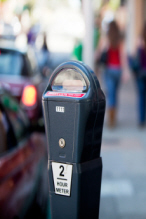Dealing with icy car parks
- Details
 The Court of Appeal recently rejected a claim for damages brought by a 78-year-old man who fell on ice in a council-operated car park. Claire Booth explains why.
The Court of Appeal recently rejected a claim for damages brought by a 78-year-old man who fell on ice in a council-operated car park. Claire Booth explains why.
In Cook v Swansea City Council [2017] EWCA Civ 2142 C, aged 78, claimed damages in negligence and/or breach of duty under the Occupiers' Liability Act 1957 for injuries sustained when he slipped and fell on ice in a pay and display car park owned and operated by the council.
The judge found that the council operated a reactive system of gritting in its unmanned car parks, whereby it only gritted them when a member of the public reported a dangerous area. He identified the two key questions before him as being: whether a reactive system was sufficient to discharge the burden imposed by s.2 of the 1957 Act; and if not, whether C had proved that it was more likely than not that a system which required reporting by cashiers and wardens would have prevented his accident.
He ruled that a reactive system was the only proportionate and reasonable way of dealing with the problem of ice in car parks, save on those rare occasions of heavy snow fall which were exceptional and called for different decisions.
He dismissed C's claim, holding that by adopting a reactive system the council had discharged the common law duty to take such care as in all the circumstances of the case was reasonable, to see that C would be reasonably safe in using the car park. He accepted that the council could have issued instructions to cashiers and wardens, but such instructions would have been part of a reactive system and there was no evidence that such instructions would have prevented C's accident.
C appealed, contending that the judge: had erred in failing to make a clear and explicit finding of breach of duty under s.2(2); had erred in law in his approach to the question of causation; and had failed to accord sufficient weight or to consider adequately evidence before him establishing causation.
The court held, dismissing C's appeal, that it was reasonably plain from the judgment itself and its context that the judge was finding that there was no breach of duty. As to whether he was wrong so to find, C did not challenge that conclusion by reference to the evidence but only by reference to the judge's as to the reporting system which "could" have been in place. Those findings as to what "could" have been done on a "prima facie" basis could not properly found, still less require, a finding of breach of duty.
Looking at the balancing exercise set out by Lord Hoffman in Tomlinson v Congleton BC [2004] UKHL 47, there were compelling reasons for upholding the judge's decision that there was no breach of duty, an assessment that he was in any event best placed to make as the trial judge.
The court rejected C's argument that there was an evidential burden on the council to establish that the accident would have occurred in any event, distinguishing Ward v Tesco Stores Ltd [1976] 1 WLR 810.
Claire Booth is an associate professional support lawyer at Bevan Brittan. She can be contacted on 0370 194 1705 or
Sponsored articles
Walker Morris supports Tower Hamlets Council in first known Remediation Contribution Order application issued by local authority
Unlocking legal talent
Principal Lawyer - Planning, Property & Contract
Lawyer (Planning and Regulatory)
Senior Lawyer - Planning, Property & Contracts Team
Legal Director - Government and Public Sector
Contracts Lawyer
Locums
Poll
20-01-2026 5:00 pm
12-02-2026 10:00 am













































